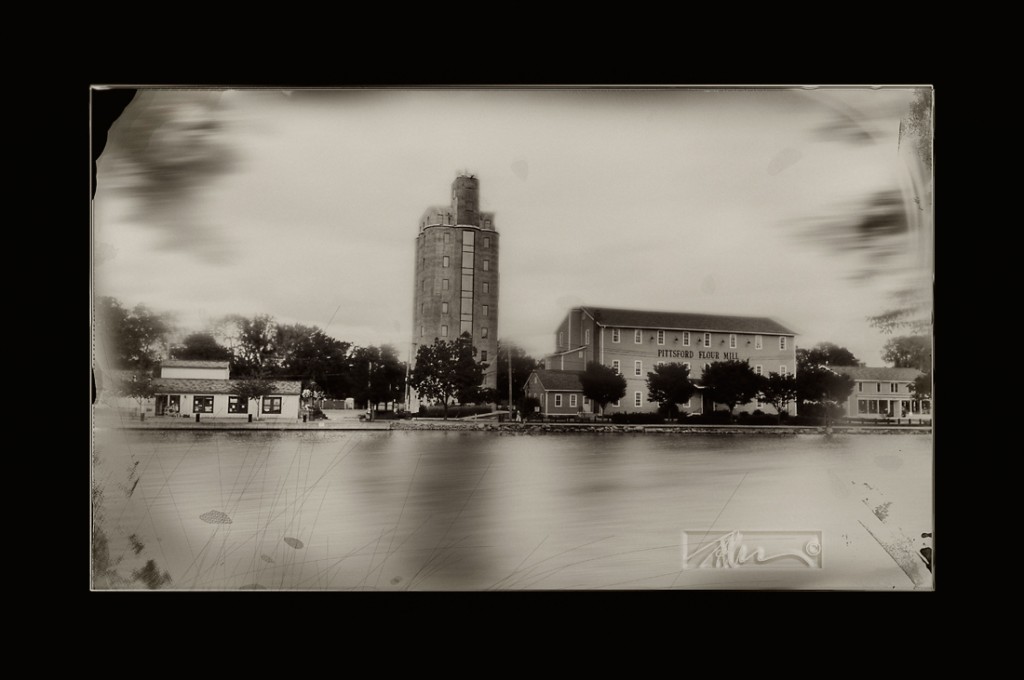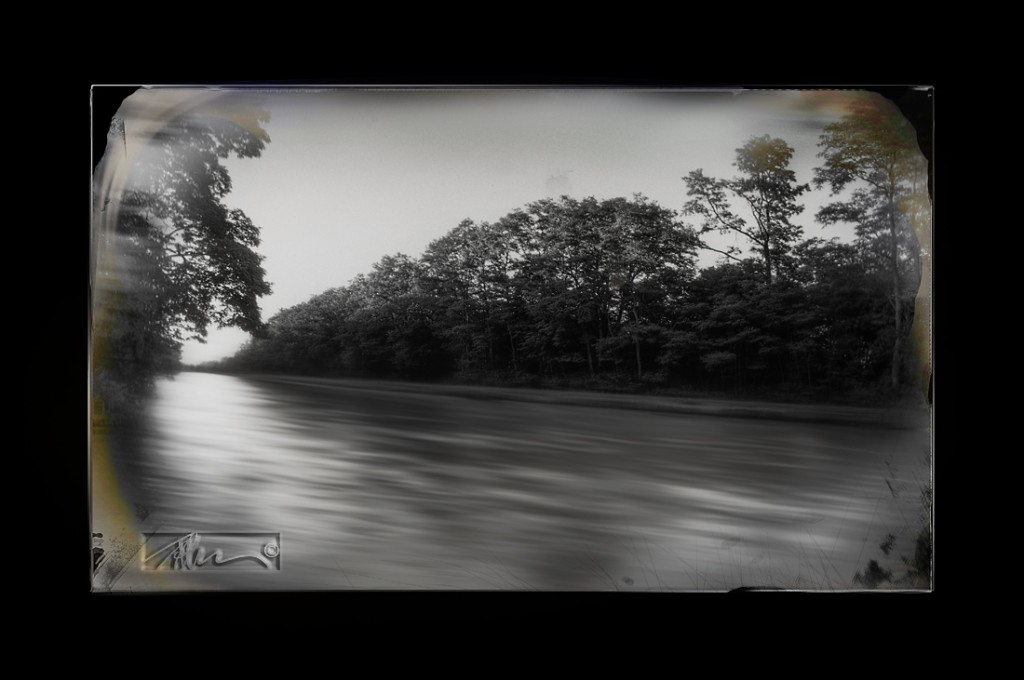The history of photography before the digital age is one that may not be fully appreciated by many of today’s computerized image-makers. Yet, for some reason, there seems to be an interest in reproducing the look of many old processes electronically.
Personally, I have always loved the look of many older methods such as Collodion Wet Plate, Platinum, Gum Bichromate, Vandyke Brown and many others. There are a rich variety of appearances that old processes exhibit that is generally missing from current digital practice.
When I was in graduate school, I was greatly impressed by the works of Mathew Brady, Alexander Gardner, Carleton Watkins, Timothy H. O’Sullivan, Roger Fenton, Gustave Le Gray and Atget to name a few of many that have inspired my own photography. There work has had a major influence on the way I see my world. I appreciate the quality and the work that went into their production. But most of all and more importantly, I appreciate the historical implications, the aesthetic qualities and the significance of their works.
The images on this page are a few examples of my personal attempts to digitally reproduce the look and feel of some of the old processes that I appreciate. They are my own images, which have been created digitally in a style that is reminiscent of older imaging technologies. I use what I know about the original process to produce a modern likeness.To mimic them can be useful for understanding at least some of the limitations and characteristics of the original process. However, it is never the same as the process itself.
To be honest, it takes a lot of work to produce a digital likeness to any process. It is not easy and it is certainly not the same as the real thing. Nor will it ever be. You can’t mimic the physicality of the actual images, their actual production or their true history electronically. Photoshop does not produce real glass, tin, or silver. More than a few characteristics are missing in a digital comparison. There really is no way to compare them to anything digital. They are without equal.
Unlike today’s computer imagery, which produces flawless and effortless photographs, early photographers were forced to push the limits of their skills and equipment in order to create their magic. It was arduous work that required a high degree of dedication. In most cases, especially in the very early years, the photographer had to fabricate and acquire nearly everything that was used in the process. The early photographer had to be competent in many areas of expertise. The image-maker was sometimes a camera builder, generally an alchemist, usually skilled camera operator and hopefully an artist.
Depending on the method used, photographers had to prepare their own plates, load them into their cameras, find their subjects, calculate long exposures, and process the results using relatively crude equipment. With some processes such as wet plate, there were time limits that had to be made or the process would fail. Every method had unique requirements that had to be followed to insure success.
When we see the results today, we are usually looking at the handiwork and craftsmanship of hard working and accomplished practitioners. The photographs were crafted by people who put their knowledge, hard work and skills to the test, every time they created an image. Today, many of those images can be viewed in a gallery situation where they have been acquired and preserved pretty much unchanged from their original condition. And while we can also experience some of the images online, the only real way is to hold one or to see them first hand in a gallery or a museum. They are amazingly beautiful to look at, to examine the subjects, to imagine their making and to realize the history. Most of them are true one of a kind objects. And all of them are jewels of actual moments from a very real past. They show us light as captured in a very different time and in a very different culture.
Most of the computer fakery happening now, seems to admire the unpreserved look of these old techniques rather than the actual appearance of a process or even the original images themselves. They seem interested in the marks of time rather than the details of the subjects. They seem to covet the flaws and the patinas that were produced over the works themselves. They reproduce the fading; scratches, collected dust and battered surfaces that happened with age.
In that sense, there may be some degree of legitimacy when considering the idea of time and the consequences of neglect. Those things are a normal part of our desire to shoot images of things from our past. The marks seem historic or set a tone for the passing of time. They can become symbols for what was. When we shoot images of an old barn or a tattered house, or a withered face, we might consider the history of the object, a place or its people. But we are also looking at how time alters things. We are looking at the effects of aging, which can also be seen as a way to see ourselves. It can be a way to confront the life cycle of all things. In that sense there is legitimacy and symbolism in the marks created. The admiration of time is a worthy reason. But so are the histories and the realities of the original images, their process, subjects and makers. For those images, produced long ago, the marks underscore the reality of time.
To copy is in some ways a form of realizing the original. To mimic is a way to learn. But, from what I can tell, most of the imitative mark making being done today, seems cold, shallow, detached and out of context. It seems unconcerned with the preservation of historic processes or the understanding and appreciation for original, historically correct photographs. For the most part, there seems little or no logical explanation other than that the practitioners seem caught up in a pathetic and naive effort to incorporate something into their images that simply has a funky look. In trying to be cool, it pretends to make old.
Instagram or Photoshop fakes are not substitutes for the actual process. Nor will they ever stand for the true significance of the historical original.
Please have a look at some of my other posts here.
NOTICE of Copyright: THIS POSTING AS WELL AS ALL PHOTOGRAPHS, GALLERY IMAGES, AND ILLUSTRATIONS ARE COPYRIGHT © JOHN NEEL AND ARE NOT TO BE USED FOR ANY PURPOSE WITHOUT WRITTEN CONSENT FROM THE WRITER, THE PHOTOGRAPHER AND/OR lensgarden.com. THE IDEAS EXPRESSED ARE THE PROPERTY OF THE PHOTOGRAPHER AND THE AUTHOR.




Faking Old Processes is an amazing short article regarding the
alchemist full book online